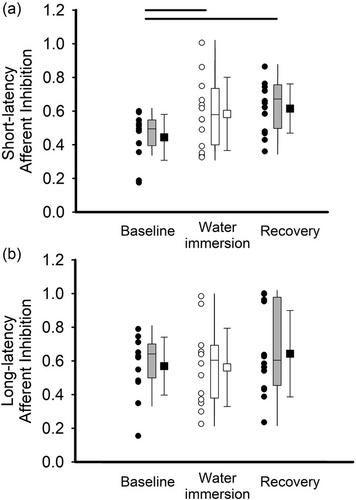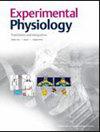The experience of pain that is induced by extremely cold temperatures can exert a modulatory effect on motor cortex circuitry. Although it is known that immersion of a single limb in very cold water can increase corticomotor excitability it is unknown how afferent input to the cortex shapes excitatory and inhibitory processes. Therefore, the purpose of this study was to examine motor-evoked potentials (MEP), short-latency afferent inhibition (SAI) and long-latency afferent inhibition (LAI) in response to immersion of a single hand in cold water. Transcranial magnetic stimulation (TMS) was used to assess MEPs, and peripheral nerve stimulation of the median nerve paired with TMS was used to measure SAI and LAI in motor circuits of the ipsilateral hemisphere. Measurements were obtained from electromyography (EMG) of the first dorsal interosseous (FDI) at baseline, during cold-water immersion, and during recovery from cold-water immersion. The intervention caused unconditioned MEPs to increase during exposure to the cold stimulus (P = 0.008) which then returned to baseline levels once the hand was removed from the cold water. MEP responses were decoupled from SAI responses, where SAI was reduced during exposure to the cold stimulus (P = 0.005) and remained reduced compared to baseline when the hand was removed from the cold water (P = 0.002). The intervention had no effect on LAI. The uncoupling of SAI from MEPs during the recovery period suggests that the mechanisms underlying the modulation of corticospinal excitability by sensory input may be distinct from those affecting intracortical inhibitory circuits.
What is the central question of this study?
Does immersion of a limb in very cold water influence corticospinal excitability and the level of afferent inhibition exerted on motor cortical circuits?
What is the main finding and its importance?
In additional to perception of temperature, immersion in 6°C water also induced perceptions of pain. Motor evoked potential (MEP) amplitude increased during immersion, and short-latency afferent inhibition (SAI) of the motor cortex was reduced during immersion; however, these responses differed after the limb was removed from the cold stimulus, as MEPs returned to normal levels while SAI remained suppressed.



